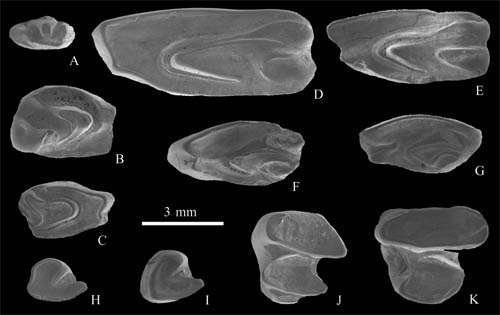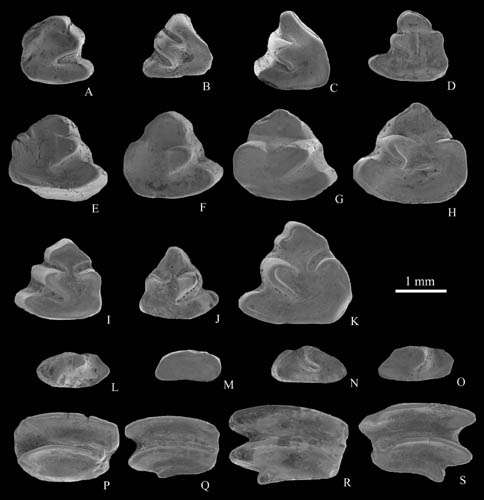Middle Miocene Ochotonids found from Siziwang Qi, Nei Mongol

Ochotonids (commonly called pikas) are a group of small-sized lagomorphs, placed in the family Ochotonidae, and are most diversified in Asia, with only two species in North America and one in Europe. Though numerous fossil species have been found, only one genus of Ochotonidae, Ochotona, survives to the present. Fossil records indicate Asia was the center of origin for Ochotonidae. However, the divergence time of Ochotona is still unclear.
Paleontologists from Institute of Vertebrate Paleontology and Paleoanthropology (IVPP), Chinese Academy of Sciences, and Department of Geosciences and Geography, University of Helsinki, found rich materials of ochotonids from Miocene localities at Damiao, Siziwang Qi, Nei Mongol during the 2006–2010 field seasons. Researchers reported the Bellatona-Bellatonoides-Ochotona group from one of these localities, DM01 (pliopithecid locality), which was dated as late Middle Miocene by the paleomagnetic method and faunal comparison, helping better understand the evolution of Ochotonidae and the origin of Ochotona.
Although no skulls or well preserved jaws of ochotonids were discovered from DM01, researchers identified four species of ochotonids based on isolated teeth: Desmatolagus moergenensis, Bellatona cf. B. forsythmajori, Bellatonoides eroli, and Ochtona cf. O. lagreli.

Desmatolagus moergenensis found from the Lower and Upper Miocene localities at Damiao have similar dental morphology as those from the DM01. Similar specimen was also found previously from Early to Late Miocene localities in the Aoerban area. Therefore, Desmatolagus moergenensis can be considered as a relic species of the genus which was flourishing during the Late Eocene and Oligocene and survived to the Late Miocene.
The p3 morphology of the Bellatona-Bellatonoides-Ochotona complex conserves a similar tooth outline, but with distinct successive structures. The Bellatona form has two labial folds and no lingual fold on p3. The p3 of Bellatonoides form has one shallow anterolingual fold that is widely separated from the anterolabial fold. The p3 of Ochotona has a deep anterolingual fold that is closely connected with the anterolabial fold by a central bridge. The posterior process on M2 also shows progressive enlargement from Bellatona to Ochotona.
As other cheek teeth of this complex are not distinguishable by either morphology or size, and no skulls or well preserved jaws of ochotonids have been found so far, researchers tentatively proposed successive linear evolutionary relationships of the Bellatona-Bellatonoides-Ochotona complex, and Ochotona may have directly originated from Bellatonoides during the late Middle Miocene.
Preliminary magnetostratigraphic stuy indicates that the DM01 locality occurs about 12−12.4 million years ago, confirmed by faunal comparison with the classical Middle Miocene Tunggur faunas, which were paleomagnetically dated from11.8 to 13 million years ago.
According to Dr. ZHANG Zhaoqun of the IVPP, lead author of the study that appeared in the latest issue of Vertebrata PalAsiatica 2012(3), “The geological age of the DM01 locality is consistent with the divergence time of Ochotona estimated by molecular dating methods, suggesting the origin of Ochotona occurred around 12 to 13 million years ago, if not much earlier”.





















